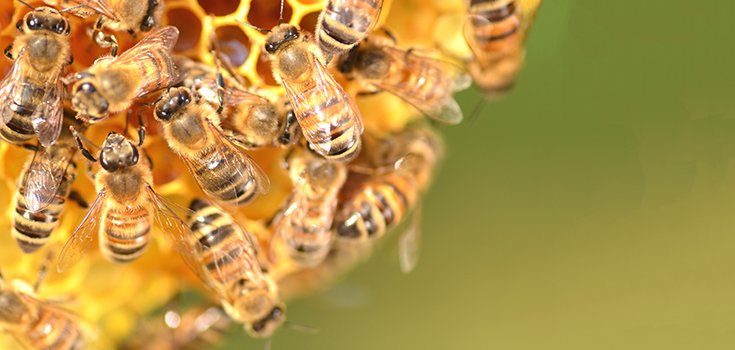Trump Admin Reverses Ban on Bee-Killing Pesticides, Some GMO Crops

In early August, the Trump administration reversed an Obama-era ban on the use of a class of pesticides linked to bee deaths and other pollinators, as well as the use of genetically modified (GM) crops in certain wildlife refuges where farming is allowed. [1]
Environmentalists had sued the Obama administration in order to bring the ban in place. [2]
U.S. Fish and Wildlife Service Deputy Director Gregory J. Sheehan said in an August 2nd memo that the changes were necessary in order to increase food supplies for ducks and other waterfowl. Wildlife refuges aren’t struggling with a dwindling waterfowl population; the Trump administration simply wants to boost their numbers so that there are more of them for hunters to hunt. [2]
Yes, you read that correctly. Rather than prioritizing the health and safety of pollinators, the Trump administration decided to prioritize boosting the number of waterfowl on public lands to make hunters happy. The reversal is also a big win for pesticide and GMO manufacturers, some of whom’s own tests show their products threaten bees.
Sheehan said in the memo that decisions as to where the pesticides could be applied and GMO crops could be grown would be made on a case-by-case basis. [2]
The memo lists more than 50 national wildlife refuges across the U.S. where the bans have already been rescinded.
Environmental groups are decrying the bold reversal and point out that the plan puts other wildlife species at risk. [1]
President and CEO of Defenders of Wildlife, Jamie Rappaport Clark said in a statement:
“Industrial agriculture has no place on public lands dedicated to conservation of biological diversity and the protection of our most vulnerable species, including pollinators like bumblebees and monarch butterflies. The Trump administration’s approval to use toxic pesticides and genetically modified crops is an insult to our national wildlife refuges and the wildlife that rely on them.”
Read: 2 Studies Link Neonic Pesticides to Bee Deaths … Sort of
The class of insecticides was banned in wildlife refuges under the Obama administration in 2014 on the basis that the chemicals harmed the tissues of non-targeted plants, that is, plants that have not been directly sprayed with the pesticides but are affected due to the chemicals “drifting” and landing on them.
Jim Kurth, head of the refuge system under Obama, who announced the ban in 2014, noted at the time that “refuges throughout the country successfully meet wildlife objectives without” GM crops or the pesticides they are engineered to withstand.
Defenders of Wildlife further noted that game birds have been doing just fine without neonicotinoids or GM crops.
On August 1st, just a day before the reversal was announced, California’s Department of Pesticide Regulation released a risk assessment indicating that the use of 4 neonicotinoid pesticides on certain crops – including corn and sorghum – may be far riskier for pollinators than previously thought. Both crops are often grown in wildlife refuges.
Read: Pesticides Known to Kill Bees Found in U.S. Drinking Water
Nathan Donley, senior scientist at the center, said of the analysis:
“The more we learn about the toxicity of neonics, the more apparent it is that pretty much any plant with nectar or pollen sprayed with these poisons is unsafe for bees. This important analysis is further proof that it’s time to ban all outdoor use of these harmful pesticides on crops.” [3]
Sources:
[1] EcoWatch
[2] Reuters
[3] Common Dreams
